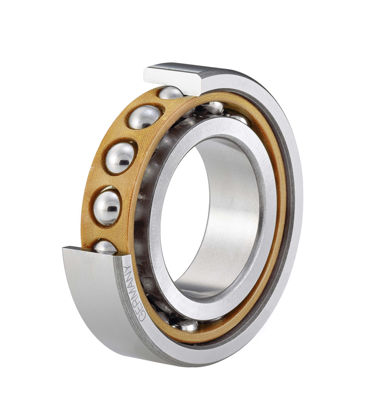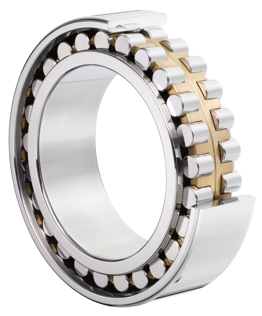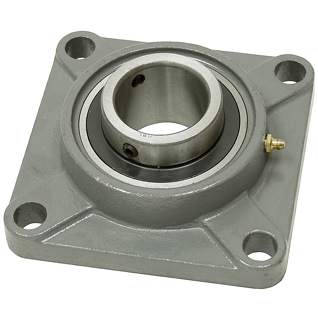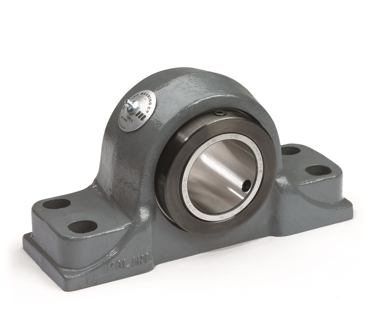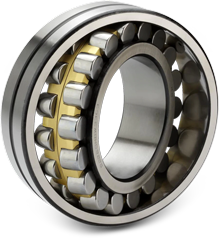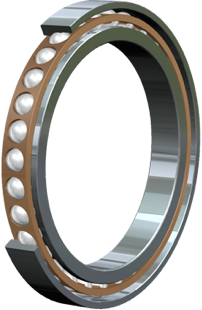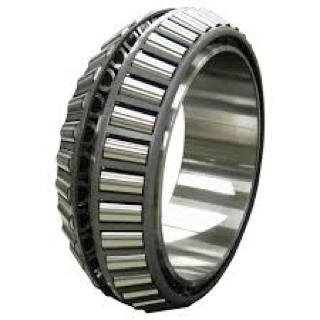VARIOUS TYPES OF BEARINGS
There exists a wide variety of types of ball bearings, each designed with a specific task in mind. All different types of bearings are optimized to deal with a specific performance demand: direction of motion, load capacity, speed, reliability, maintenance demands, and more. Here follows a list of some of the most common and noteworthy types of ball bearings:
Ball and roller bearings
Angular contact bearings
Ball bearings
Cam followers
Cylindrical roller bearings
Double row bearings
Instrument / miniature bearings
Needle roller bearings
Rod ends
Roll neck bearings
Self-aligning, self-lubricating bearings
Shaker screens
Spherical roller bearings
Steel mill bearings
Super precision / precision / metric bearings
Tape thrust bearings
Taper roller bearings
Thin section ball bearings
Z-mill bearings
Mounted Bearing Units
Cartridge
Flange block bearings
Pillow block bearings
Split bearings
Take-up bearings
Lubricated Bearings
Babbitt bearings
Bronze bearings
High-temperature bearings
Journal bearings
Self-lubricating bearings
Specialty Bearings
Plastic bearings
Nylon bearings
Teflon bearings
Ceramic bearings
Angular contact ball bearings
Arcanol rolling bearing greases Axial angular contact ball bearings
Axial cylindrical roller bearings
Axial deep groove ball bearings
Axial needle roller and cage assemblies
Axial spherical roller bearings
Barrel roller bearings
Bearing housings
Bearings for screw drivers
Crossed roller bearings
Cylindrical roller bearings
Deep groove ball bearings
Drawn cup roller clutches
Fastners and retainers
Four point contact bearings
Inner rings
Insert bearings and housing units, idler sprocket units, idler pulley units
Needle roller and cage assemblies
Rotary table bearings
Sealing rings
Self-aligning ball bearings
Spherical roller bearings
Spindle bearings
Tapered roller bearings
Track rollers
Performance Characteristics of Bearings
Low-friction operation
The most important characteristic that all types of ball bearings share is that they reduce friction between two surfaces in contact – this creates a more efficient transfer ofenergy, reduces erosion, and allows greater longevity. As bearing technology has progressed, new advances in bearing shapes, materials, fluid dynamics, and electromagnetic enhancements have all enabled better performance.
Two different types of bearing's shapes dominate: the sphere types of ball bearings (ball bearings) and the cylinder (roller bearings). Most types of ball bearings are typically smaller and more versatile, while the different types of roller bearings have greater endurance and less need for maintenance.
Bearing material technology has seen numerous important advances, moving from wood to iron, and then from steel to today's low-friction plastics. Exotic bearings may include a contained fluid barrier, or even an electromagnetic field for ultra-efficient performance – these technologies actually keep the two bearing components from touching, which greatly increases service life.
The newest advances in technology of different bearing types combine several different techniques to deliver optimum performance, such as specially-shaped plastic types of ball bearings that also include a fluid barrier.
Load capacity
Nearly as important as friction reduction is a bearing's load capacity. Heavy machinery (conveyor belts, manufacturing equipment, vehicles, etc.) require different types of bearings that can handle heavy loads. Often speed or precision are sacrificed, but the trade off is worth it if greater loads can be managed. Plastic roller bearings, with their linear contact patch, are a notable example of different types of bearings designed with heavy loads in mind.
Direction of force is a separate characteristic to consider. Forces can come from a variety of directions: radial, axial (or thrust), bending movements, or a combination of the above. Different types of bearings are designed to manage different types of movement.
Speed capacity
A bearing's operating speed is just as important as load capacity. Speed is typically measured as the maximum relative surface speed, using feet or meters per second. Performance may also be noted as the product of bearing diameter (usually in millimeters) and rotations per minute, or D*N – a higher result means a greater speed capacity.
Different types of bearings are designed with an optimum speed capacity in mind, but in practice there is significant overlap from one bearing to the next, and an application may have a choice of suitable bearings types. By broad definition, high-speed applications generally prefer magnetic or fluid types of ball bearings, rolling-element bearings are best for mid-range speeds, and plain types of ball bearings are most suited for low speed applications.
Play allowance
'Play' is a special measurement of different types of bearings, and notes the gap between the bearing and the adjacent surface. An example: a 20mm roller bearing in a 23mm slot has 3mm of play. Play comes into account for applications with variable force directions or speeds... the greater the play, the greater amount of variability that can be accommodated.
For applications that demand precision, less play is typically desired. Lower speeds and heavier loads have a need for greater play. Types of ball bearings within a high-quality timepiece will have as little play as possible – even the smallest variance can lead to inaccurate readings. The types of ball bearings on a revolving door will benefit from much greater play, as they will have to accommodate a variety of different forces and directions.
Relative stiffness
Movement is not limited to forces affecting the bearing – stiffness measures movement within the bearing itself. Heavy loads and high speeds have the potential to deform different types of bearings – accordingly, these bearings will be constructed of stronger, more resistant materials. Slower speeds and lighter loads have less risk of bearing deformation, allowing the use of less-resistant materials.
Fluid bearings are a special case, as the fluid always deforms somewhat in reaction to applied force – in these bearings, play and stiffness are uniquely intertwined to define the performance characteristics as a whole.
Operating life
The operating life of varying ball bearing types is an important consideration in all applications. At the high end of the spectrum, magnetic and fluid bearings have the potential for indefinite service life – actual results may be somewhat less, but these bearings certainly have the greatest endurance of all types.
Rolling-element bearings provide mid-range operating life results. Ultimately, their lifetime will be defined by a number of factors related to the application – maintenance, temperature, load, lubrication, and more. Rolling-element bearings that are properly serviced, operate at mean speeds and loads, and are well - lubricated can expect a long life... lesser attention to longevity will deliver diminished results.
For plain bearings, the bearing material is the primary consideration. Durable materials deliver outstanding service life, while lesser materials can fail much more rapidly.
One thing to remember: bearing life is always relative to the needs of the application. In some cases just a few hours of service time may be more than enough, while in others a dozen years of faithful service might seem like the blink of an eye.
Maintenance requirements
Most bearings require at least periodic maintenance to ensure proper operation. Bearings used in high-speed or heavy-load applications are particularly vulnerable to erosion and failure – they should be checked regularly for signs of wear, and adjusted whenever necessary. Even for bearings that have a less demanding performance profile, regular maintenance and attention to cleaning & lubrication can extend operating life greatly.
Low or even no-maintenance bearings are becoming increasingly common, with fluid and magnetic bearings leading the way in combining outstanding performance with long operating life. A number of different bearings technologies are aimed at further reducing maintenance requirements, and thus bringing down operational costs.
Haven't found what you want? Look here
Angular Contact Bearings
Cylindrical Roller Bearings
Flange Bearings
Pillow Block Bearings
SKF Bearings
Spherical Roller Bearings
Spindle Bearings
Thin Section Bearings
Timken Bearings



